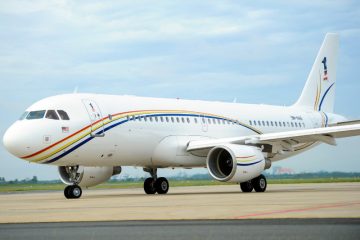Discovering the Wonders of Papua New Guinea

Introduction
Papua New Guinea (PNG) is a country located in the southwestern Pacific Ocean, known for its stunning biodiversity and rich cultural heritage. Comprising over 600 islands and home to diverse ethnic groups, Papua New Guinea presents a unique intersection of the natural and human worlds. Understanding PNG is crucial, not just for appreciating its natural beauty but also for recognising its strategic geographical importance and emerging role in global environmental conversations.
Current Status and Developments
In recent months, Papua New Guinea has been in the news due to various developments surrounding its economy, environment, and cultural preservation. Infrastructure development has taken centre stage as the government invests in new roads, schools, and healthcare facilities aimed at improving the quality of life for its citizens. However, challenges remain, particularly in the areas of education and health services, which require urgent attention.
Moreover, Papua New Guinea’s position as a biodiversity hotspot underlines its importance in global environmental discussions. The country is home to numerous rare species and ecosystems that face threats from deforestation and climate change. Recent initiatives aimed at conservation, including community-led projects, have shown promise. Research undertaken by the University of Papua New Guinea and various NGOs is pivotal in documenting and protecting endangered species.
Cultural and Tourism Insights
The cultural wealth of Papua New Guinea is another aspect that cannot be overlooked. With over 800 recognised languages and diverse traditions, PNG stands as one of the most culturally rich nations in the world. The annual Mount Hagen Cultural Show and the Traditional Singsing Festival are renowned events that draw tourists and researchers from around the globe to witness colourful dances, music, and art forms.
Tourism is gradually rebounding following setbacks caused by the COVID-19 pandemic, with a focus on eco-tourism and cultural exchanges being major attractions. Visitors are encouraged to explore the stunning landscapes of the Highlands, the incredible marine biodiversity in the Coral Sea, and experience the warmth of local communities by engaging in village stays.
Conclusion
In conclusion, Papua New Guinea is a nation rich in natural wonders and cultural diversity that deserves more international attention. Continued efforts in infrastructure development, environmental conservation, and cultural preservation will be crucial for the sustainable future of this fascinating country. As global awareness of climate change increases, PNG’s unique ecosystems will play an important role in the discussions surrounding biodiversity. For those looking for an adventure of a lifetime, PNG offers not only spectacular scenery but also an opportunity to connect with traditions that have endured for millennia.







